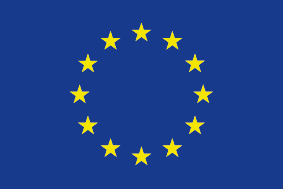

This document is an excerpt from the EUR-Lex website
Document 62024CN0468
Case C-468/24, Netz Niederösterreich: Request for a preliminary ruling from the Landesgericht St. Pölten (Austria) lodged on 3 July 2024 – SR v Netz Niederösterreich GmbH
Case C-468/24, Netz Niederösterreich: Request for a preliminary ruling from the Landesgericht St. Pölten (Austria) lodged on 3 July 2024 – SR v Netz Niederösterreich GmbH
Case C-468/24, Netz Niederösterreich: Request for a preliminary ruling from the Landesgericht St. Pölten (Austria) lodged on 3 July 2024 – SR v Netz Niederösterreich GmbH
OJ C, C/2024/5406, 16.9.2024, ELI: http://data.europa.eu/eli/C/2024/5406/oj (BG, ES, CS, DA, DE, ET, EL, EN, FR, GA, HR, IT, LV, LT, HU, MT, NL, PL, PT, RO, SK, SL, FI, SV)

|
Official Journal |
EN C series |
|
C/2024/5406 |
16.9.2024 |
Request for a preliminary ruling from the Landesgericht St. Pölten (Austria) lodged on 3 July 2024 – SR v Netz Niederösterreich GmbH
(Case C-468/24, Netz Niederösterreich)
(C/2024/5406)
Language of the case: German
Referring court
Landesgericht St. Pölten
Parties to the main proceedings
Applicant: SR
Defendant: Netz Niederösterreich GmbH
Questions referred
|
1. |
Must Article 22 of Directive (EU) 2019/944, (1) read in conjunction with Annex II of that directive, be interpreted as meaning that a system operator is required to [take into consideration] a final customer’s wish not to receive a smart meter, and has an obligation in such a case to provide the final customer with a conventional meter instead of a smart meter? |
|
2. |
Must Article 2(1) of Directive 2014/32/EU, (2) which defines in more detail a ‘measuring instrument’ within the meaning of the instrument-specific Annexes III to XII (active electrical energy meters [MI-003]), read in conjunction with Article 20(b) and (c) and Article 23(3) of Directive 2019/44, be interpreted in such a way that it runs counter to a provision of national law (point 31 of Paragraph 7(1) of the Elektrizitätswirtschafts- und organisationsgesetz 2010 (3) (Law on the organisation of the electricity sector 2010) in the version in BGBl I No. 17/2021, ‘the ElWOG’), which does not lay down any specific data protection requirements in relation to meters? |
|
3. |
Must Article 20(b) and (c), Article 21(1)(a) and Article 23(3) of Directive 2019/44 also take into consideration Article 6(1) of Directive 1999/34/EC (4) amending Council Directive 85/37/EEC? (5) |
|
4. |
Must Article 5(3) of Directive 2002/58/EC (6) be interpreted as meaning that the term ‘electronic communications network’ is also applicable to an electricity system via which data (consumption data, metadata, personal identity) are transmitted for the purposes of Article 20(b) and (c), Article 21(1)(a) and Article 23(3) of Directive 2019/944? |
|
5. |
Must Articles 5(1)(f), Article 13 and Article 32(2) of Regulation (EU) 2016/679 (7) and Article 7, Article 8(1) and (2) of the Charter of Fundamental Rights of the European Union (8) (‘the Charter’) be interpreted as contradicting a national provision (Paragraph 1(6) of the Intelligente Messgeräte-Einführungsverordnung (9) (Ordinance on the introduction of smart meters), BGBl II No. 138/2012 in the version in BGBl II No. 9/2022 of 13 January 2022, ‘the IME-VO’), according to which only the respective configuration of the reading interval must be visible for the final customer, but not whether the system operator recognised a ‘justified individual case’ (Paragraph 84a(1) of the ElWOG) and has retrieved data of the final customer before the set interval? |
|
6. |
Having regard to Article 52(3) of the Charter, the fifth recital thereof and the explanations relating to Article 7 of the Charter, must the case-law of the European Court of Human Rights on Article 8 of the European Convention on Human Rights taken into account for the purpose of interpreting Article 20(b) and (c), Article 21(1)(a) and Article 23(3) of Directive 2019/944? |
(1) Directive (EU) 2019/944 of the European Parliament and of the Council of 5 June 2019 on common rules for the internal market for electricity and amending Directive 2012/27/EU (OJ 2019 L 158, p. 125).
(2) Directive 2014/32/EU of the European Parliament and of the Council of 26 February 2014 on the harmonisation of the laws of the Member States relating to the making available on the market of measuring instruments (OJ 2014 L 96, p. 149).
(3) Austrian Law on the organisation of the electricity sector 2010 in the version in BGBl I No. 17/2021.
(4) Directive 1999/34/EC of the European Parliament and of the Council of 10 May 1999 amending Council Directive 85/374/EEC on the approximation of the laws, regulations and administrative provisions of the Member States concerning liability for defective products (OJ 1999 L 141, p. 20).
(5) Council Directive 85/374/EEC of 25 July 1985 on the approximation of the laws, regulations and administrative provisions of the Member States concerning liability for defective products (OJ 1985 L 210, p. 29).
(6) Directive 2002/58/EC of the European Parliament and of the Council of 12 July 2002 concerning the processing of personal data and the protection of privacy in the electronic communications sector (Directive on privacy and electronic communications) (OJ 2002 L 201, p. 37).
(7) Regulation (EU) 2016/679 of the European Parliament and of the Council of 27 April 2016 on the protection of natural persons with regard to the processing of personal data and on the free movement of such data, and repealing Directive 95/46/EC (General Data Protection Regulation) (OJ 2016 L 119, p. 1).
(8) Charter of Fundamental Rights of the European Union (OJ 2016 C 202, p. 389).
(9) Austrian Ordinance on the introduction of smart meters, BGBl II No. 138/2012 in the version in BGBl II No. 9/2022 of 13 January 2022.
ELI: http://data.europa.eu/eli/C/2024/5406/oj
ISSN 1977-091X (electronic edition)